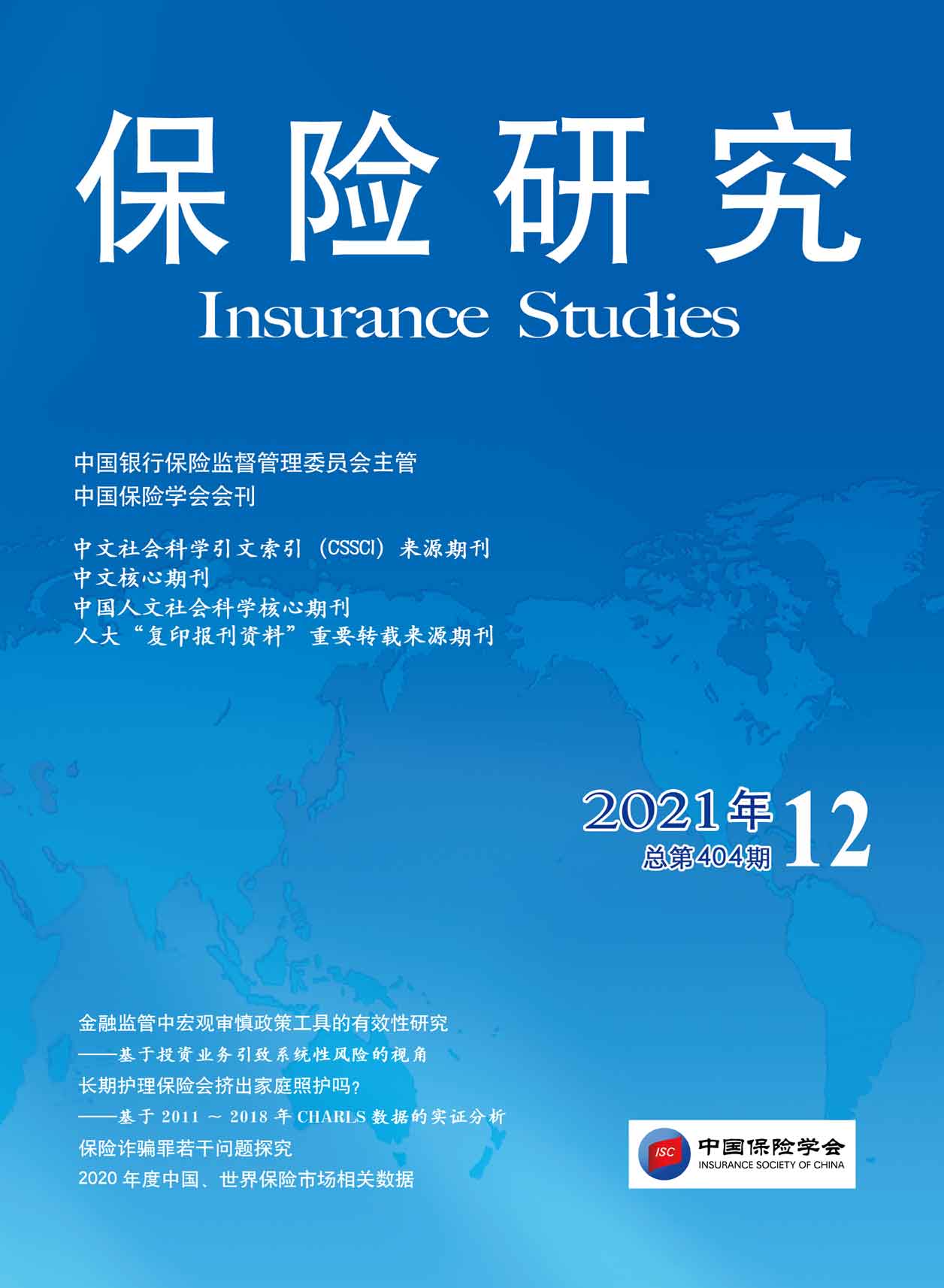
《保险研究》20210702-《居民金融消费与健康养老保险配置》(徐敬惠、李鹏)
[中图分类号]F840[文献标识码]A[文章编号]1004-3306(2021)07-0023-22 DOI:10.13497/j.cnki.is.2021.07.002
资源价格:30积分
- 内容介绍
[摘 要]本文基于最新公布的七普数据,对我国“十四五”期末的居民部门金融资产进行了示意性测算:预计到2025年,我国居民部门金融资产总规模将达286万亿(人均、户均金融资产总规模将达20.27万元/人、57.91万元/户),保险资产将以46.70万亿的总规模成为第二大居民金融资产,其中人身险资产达到32.99万亿(人均、户均人身保险资产规模为2.34万元/人、6.68万元/户)。尽管如此,通过对居民部门人身保险保障(医疗健康+养老)缺口的测算分析显示:“十四五”期末,在已实现配置上述人身险资产前提下,我国居民部门的健康养老保险保障总缺口仍高达74.51万亿元(人均5.28万元/人,户均15.08万元/户),细分来看,医疗健康保障缺口值达72.17万亿元(人均5.11万元/人,户均14.61万元/户);养老保障缺口值约为2.34万亿元(人均0.17万元/人,户均0.47万元/户)。研究发现:居民部门除保险外的其他金融资产(总金融资产减去既有的保险资产)的少量配置转移(低于20%),就能较好覆盖当前的健康养老保险保障缺口。为进一步满足我国居民健康保障及养老保障的缺口需求,需在杠杆保障和长期保底收益的基础上,持续提高商业人身保险资产配置的吸引力,大力引导居民金融资产配置向商业人身保险流入,通过商业保险来弥补社会保险的不足。
[关键词]家庭部门;金融资产;人身保险;缺口分析
[作者简介]徐敬惠,大家保险集团总经理,高级经济师;李鹏,红杉资本中国基金资深研究员,经济学博士后。
Household Financial Consumption and Health And Pension Insurance Allocation
XU Jing-hui,LI Peng
Abstract:Based on the latest published census,this paper made an indicative calculation of the financial assets of China ′s residential sector at the end of the 14th Five-Year Plan:total financial assets of China ′s residential sector will reach 286 trillion yuan ( 202,700 yuan/ person and 579,100 yuan/household ),and the insurance assets will become the second largest residential financial assets with a total size of 46.7 trillion yuan,of which the life insurance assets will reach 32.99 trillion yuan (23,400 yuan/person and 66,800 yuan/household).However,our analysis of personal insurance protection gap (medical + health + pension) indicated that,even with the above-mentioned personal insurance allocation level,the total gap of China′s residential sector′s health and pension insurance coverage was still be as high as 74.51 trillion yuan (52,800 yuan/person,150,800 yuan/household ).Further breakdown of the numbers showed that,the medical and health insurance gap was 72.17 trillion yuan (51,100 yuan/person,146,100 yuan per household);the pension gap was 2.34 trillion (1700 yuan/person and 4700 yuan/household).A small allocation transfer (less than 20% ) in the residential sector′s other financial assets (total financial assets minus existing insurance assets) can cover the current health and pension insurance gap.To further close the health and pension protection gap of China′s residential sector,we should increase the appealing of commercial insurance on the basis of leveraged protection and long-term minimum return guarantee,thus channeling the residential sector′s financial assets into commercial life insurance.The latter can make up for the shortage of social insurance.
Key words:household sector;financial assets;life insurance;gap analysis

《保险研究》20211201-《金融监管中宏观审慎政策工具的有效性研究——基于投资业务引致系统性风险的视角》(邹奕格、粟芳)

《保险研究》20211202-《长期护理保险会挤出家庭照护吗?——基于2011~2018年CHARLS数据的实证分析》(朱铭来、何敏)

《保险研究》20211203-《参与农作物保险是否促进农户农地转入?——基于内蒙古的微观实证》(柴智慧)

《保险研究》20211204-《环境污染责任保险与企业环境信息披露》(李敏鑫、王江寒)

《保险研究》20211205-《保险诈骗罪若干问题探究》(曹顺明、杨润宇、赵瑛)

《保险研究》20211206-《<民法典>视野下保险合同第三人代缴保费问题研究》(王家骏)
